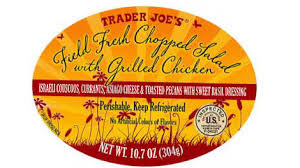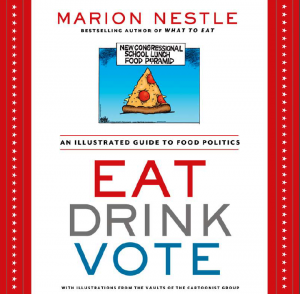Yesterday, food studies under attack. Today, it’s the dietary guidelines
The food movement must be succeeding beyond anyone’s wildest expectations.
Now it’s the Dietary Guidelines Advisory Committee’s (DGAC’s) turn to come under attack.
The Guidelines: These are principles of healthful diets aimed at policymakers (not the general public).
The history: They have been published every five years since 1980, so we are now in round #8 scheduled for publication in 2015.
The process: Two federal departments, USDA and Health and Human Services, appoint an advisory committee of nutrition scientists. The committee reviews the science and prepares a report. Since 2005, the agencies have written the guidelines, not the committee.
Disclosure: I was a member of the advisory committee for the 1995 Guidelines.
The fireworks: According to ProPolitico Morning Agriculture (behind a pay wall, alas), the committee is attracting unusual attention from the right:
- The Washington Examiner, writes that “committee members…are hijacking the guidelines to advance a range of ideological agendas having nothing to do with healthy eating.”
- The Daily Caller asks “Are Progressives Inserting Their Agenda Into Your Diet?” Tuesday.
- The Washington Free Beacon wants you to “Meet the Radicals Creating the New Federal Dietary Guidelines.”
A clue to what is upsetting these folks comes from the committee’s request for public comments. It is asking for comments that address:
- Elements of a whole food system
- Information on specific food groups or commodities
- Sustainability metrics that have been implemented or are in development
These, apparently, are fighting words.
Yesterday, Fox News asked why “ivory tower types” were in charge of determining food choices for Americans.
Its story particularly singled out Miriam Nelson, a professor at Tufts (not New York University—could Fox be confusing her with me?):
New York University professor Miriam Nelson, said at the committee’s last meeting, “We need to make sure that the guidelines and the policies are promoting those foods … [that] are sustainably grown and have the littlest impact on the environment.”
…The professors of the DGAC may think their job is save the planet by promoting sustainable agriculture and plant-based diets, but if they don’t understand the real-world implications of their work, they’ll be oblivious to the havoc they’ll wreak on the millions of Americans whose diets hinge on their guidelines.
By this time, the Dietary Guidelines are hardly of interest to anyone but policy wonks (really, they never change all that much). Cheers to the current committee for injecting some life into them.
The 2015 Guidelines will be fun to watch.






